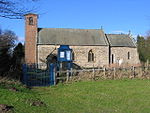HM Prison Millsike
HM Prison Millsike is a prison currently under construction in York, Yorkshire, England. It is due to open in 2025. And will be operated on a 10 year contact by Mitie Care & Custody. Construction of a new, unnamed prison began in November 2021 by construction company Kier. The construction of the new prison was part of the governments New Prisons Programme, following the construction of Five Wells Prison and HMP Fosse Way in Glen Parva. HMP Millsike, in addition to HMP Five Wells and HMP Fosse Way, was built using PCE's Secure Prison platform-DfMA build system. This offers many benefits, such as offsite manufacturing and standardised components, creating a more sustainable, repeatable build system that aligns to the Ministry of Justice's Net Zero Carbon ambitions. The site is opposite HMP Full Sutton and is due to open in 2025. The new prison will hold approximately 1,500 prisoners and will be the first prison in the UK to run solely on electricity generated through the use of solar panels and heat pumps, allowing the prison to use approximately a quarter of the energy needed to heat historic prisons, such as HMP Wormwood Scrubs. On 27 February 2023, Prisons Minister, Damian Hinds revealed the name of the prison as HM Prison Millsike. The prison was named after the local river Millsike Beck, that runs adjacent to the prison. After a six-week consultation, a panel of Ministry of Justice representatives, as well as local residents to the prison created a shortlist that was presented to then Deputy Prime Minister, Dominic Raab, who agreed upon the name.
Excerpt from the Wikipedia article HM Prison Millsike (License: CC BY-SA 3.0, Authors).HM Prison Millsike
Moor Lane,
Geographical coordinates (GPS) Address Nearby Places Show on map
Geographical coordinates (GPS)
| Latitude | Longitude |
|---|---|
| N 53.985 ° | E -0.874 ° |
Address
Moor Lane
YO41 1LX , Full Sutton
England, United Kingdom
Open on Google Maps









